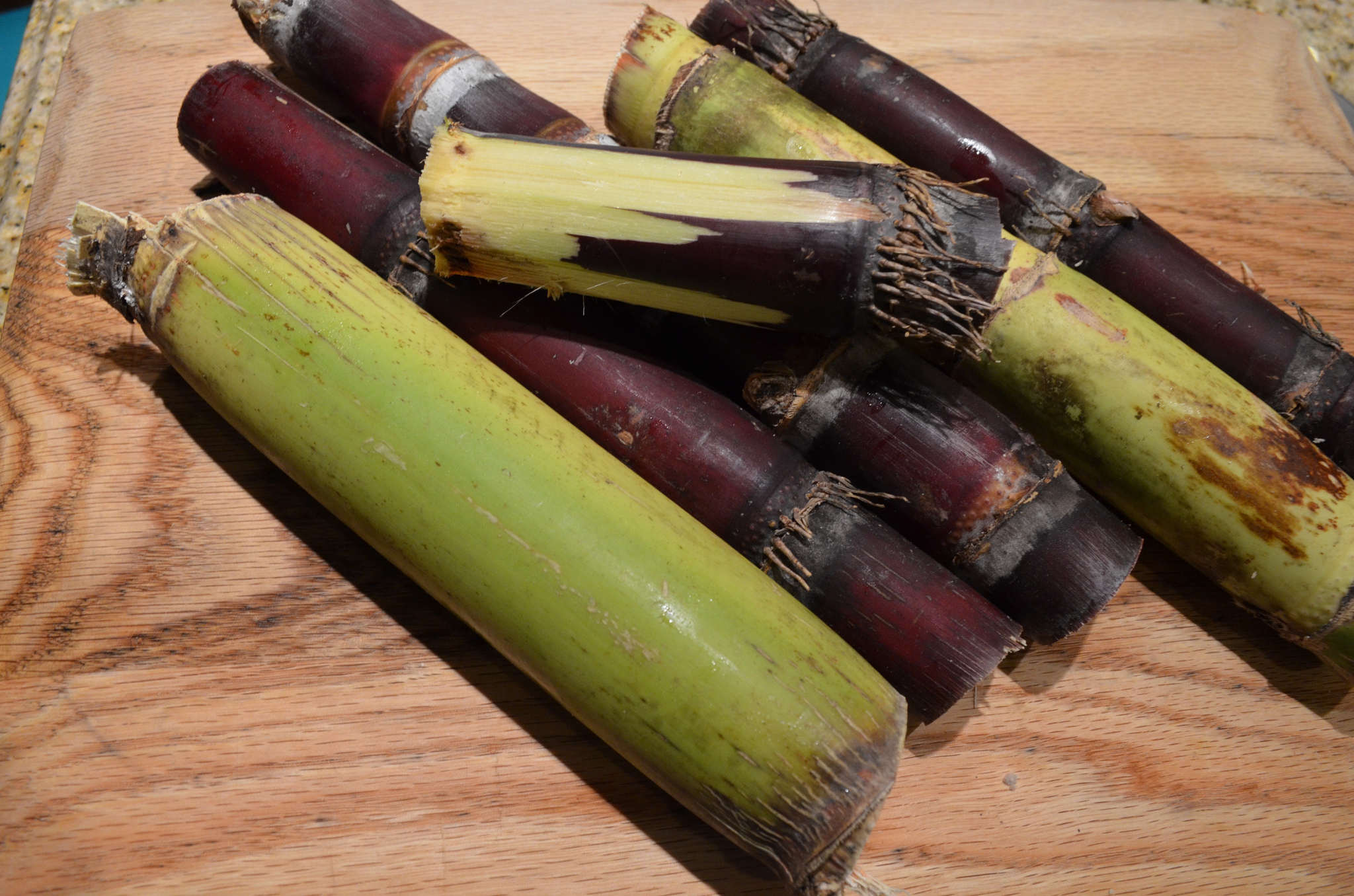All plants produce sugar through a process called photosynthesis, but a few plants produce a lot of sugar. One of those plants is the sugar cane. The sugar that the sugar cane plant produces in stored in its tall, hard stem. One of the most unusual facts about sugar cane is that it is a tall perennial (grows back every year) grass, so when students taste the sugar cane, they are actually eating grass!
Sugar cane requires lots of sun and water to grow well, so it grows best in tropical regions of the world, including Mexico, Central America and the Caribbean. It is harvested by cutting the sugar cane at the base, but leaving the roots in tact. This allows the sugar cane stalk to grow back again and provide another harvest.
Latin American children often chew on sugar cane. The stalk is cut at the base with a machete and then cut into pieces. The outer layer of the stalk is then is cut or peeled off with a machete or other knife. Kids then suck and chew on the inside fibrous portion of the stalk until all of the sweet juice is consumed.
Sampling sugar cane feels like a very authentic Latin American experience. Most people will need to order the sugar cane. You can purchase it HERE.
Based on the number of children you are preparing this for, you will need to cut the sugar cane into appropriate sized pieces. Most of us don’t have a machete handy, so using a table saw, chop saw, or hand saw (clean the blade first on all of these!) is probably the next best thing!
Next, using a large chopping knife, cut off the outer hard layer of cane.
Raw sugar cane is enjoyed by chewing on the inside fibrous portion of the sugar cane stalk. Once the sugary juice is gone, discard fibrous remainder (Do NOT eat/swallow this part of the cane!).
Note: it is best to cut sugar cane as close to sampling time as possible to keep it from deteriorating.
Eating grass ain’t so bad!






